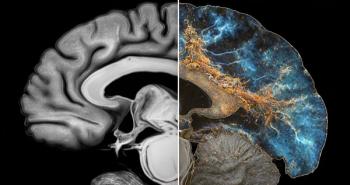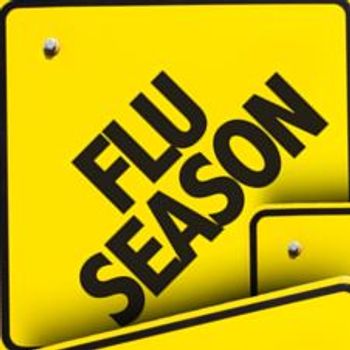
Johnson & Johnson Rolls Out Data From Major Depressive Disorder Portfolio at ECNP
Clinical and real-world data are on deck for lumateperone, seltorexant, and esketamine to treat major depressive disorder and treatment-resistant depression.
Johnson & Johnson will present 17 abstracts featuring new clinical and real-world data on medications from its neuropsychiatry portfolio at the European College of
The presentations span the company's pipeline for
- Post-hoc analysis of lumateperone phase 3 data evaluating the drug's impact on sexual function in patients with MDD
- European Union and United Kingdom sub-group analyses of phase 3 data comparing adjunctive seltorexant with adjunctive quetiapine XR in MDD patients with insomnia symptoms
- Findings from the ESCAPE-TRD study examining baseline patient characteristics associated with reaching remission using esketamine vs quetiapine XR in treatment-resistant depression.
"MDD is a complex disorder that can manifest in different ways for each individual, and the traditional one-size-fits-all treatment approach often results in mixed patient outcomes," Bill Martin, PhD, global neuroscience therapeutic head, Johnson & Johnson Innovative Medicine, said in a statement.1 "At Johnson & Johnson, we are committed to advancing innovative and differentiated therapies through a targeted and patient-first approach, and our data at ECNP strongly reflects our relentless focus on this commitment."1
The company will also present real-world safety data from the French ELLIPSE study of esketamine and results from a Delphi research study outlining expert consensus recommendations from European psychiatrists on decision-making factors for continuing esketamine treatment in patients with TRD.
Lumateperone, an oral, once-daily atypical antipsychotic currently approved for schizophrenia and bipolar depression, has a supplemental new drug application under FDA review for use as an adjunctive treatment for MDD. Although the specific lumateperone mechanism of action is still under investigation, research shows that the drug demonstrates high serotonin 5-HT2A receptor occupancy and lower dopamine D2 receptor occupancy at therapeutic doses, according to Johnson & Jonhson.1
Seltorexant is a first-in-class investigational therapy that selectively antagonizes the human orexin-2 receptor, developed as an adjunctive treatment for adults with MDD and insomnia symptoms. Chronic or mistimed orexin-2 receptor activation promotes hyperarousal, insomnia, and cortisol excess, factors implicated in depression, the company added.1
Esketamine, a non-selective, non-competitive NMDA receptor antagonist, received FDA approval for adults with TRD when used alone or with an oral antidepressant, and for depressive symptoms in adults with MDD who have acute suicidal ideation or behavior when used with an oral antidepressant. Esketamine modulates a glutamatergic pathway in the brain, although its precise antidepressant mechanism remains unknown. The treatment is currently approved in 79 markets, Johnson & Johnson said, and has been administered to more than 150,000 individuals worldwide.1
MDD is Global
MDD affects approximately 332 million people worldwide, or about 4 percent of the population. It is especially pervasive in the US, where approximately 22 million adults experienced at least 1 major depressive episode in 2023.2 The disorder presents with as many as 256 unique symptom combinations,3 but current standard-of-care oral antidepressants do not come close to reducing disease burden. Insomnia is one of the most common symptoms associated with MDD, affecting more than 80% of those who carry the diagnosis, and increasing the risk for symptom exacerbation and even suicide.4
Approximately one-third of adults with MDD do not respond to oral antidepressants alone and meet criteria for TRD, typically defined as inadequate response to 2 or more oral antidepressants administered at adequate doses for adequate durations.5 Based on the STAR*D study, after trying a third oral antidepressant, approximately 86% of patients do not achieve remission.6
References
Johnson & Johnson to highlight breadth of its major depressive disorder portfolio at 2025 ECNP Congress. News release. Johnson & Johnson. October 10, 2025. Accessed October 10, 2025. https://www.jnj.com/media-center/press-releases/johnson-johnson-to-highlight-breadth-of-its-major-depressive-disorder-portfolio-at-2025-ecnp-congress
World Health Organization. Mental disorders. Accessed October 10, 2025. https://www.who.int/news-room/fact-sheets/detail/mental-disorders
Su YA and Si T. Progress and challenges in research of the mechanisms of anhedonia in major depressive disorder. Gen Psychiatr. 2022;35:e100724. doi: 10.1136/gpsych-2021-10072
Nutt D, Wilson S, Paterson L. Sleep disorders are core symptoms of depression. Dialogues Clin Neurosci. 2008;10(3): 329–336.
Zhdanava M, Pilon D, Ghelerter I, et al. The prevalence and national burden of treatment-resistant depression and major depressive disorder in the United States. J Clin Psychiatry. 2021;82(2):20m13699. doi: 10.4088/JCP.20m13699epression
Rush AJ, Trivedi MH, Wisniewski SR, et al. Acute and longer-term outcomes in depressed outpatients requiring one or several treatment steps: a STAR*D report. Am J Psychiatry. 2006 Nov;163(11):1905-17. doi: 10.1176/ajp.2006.163
Newsletter
Enhance your clinical practice with the Patient Care newsletter, offering the latest evidence-based guidelines, diagnostic insights, and treatment strategies for primary care physicians.



























































































































































































































































































